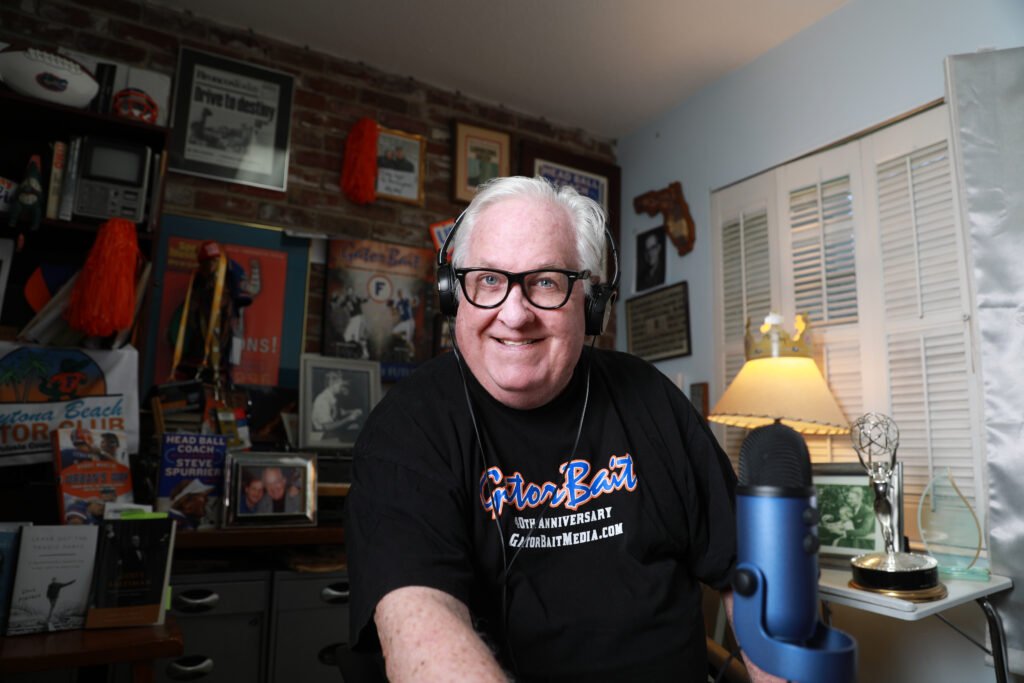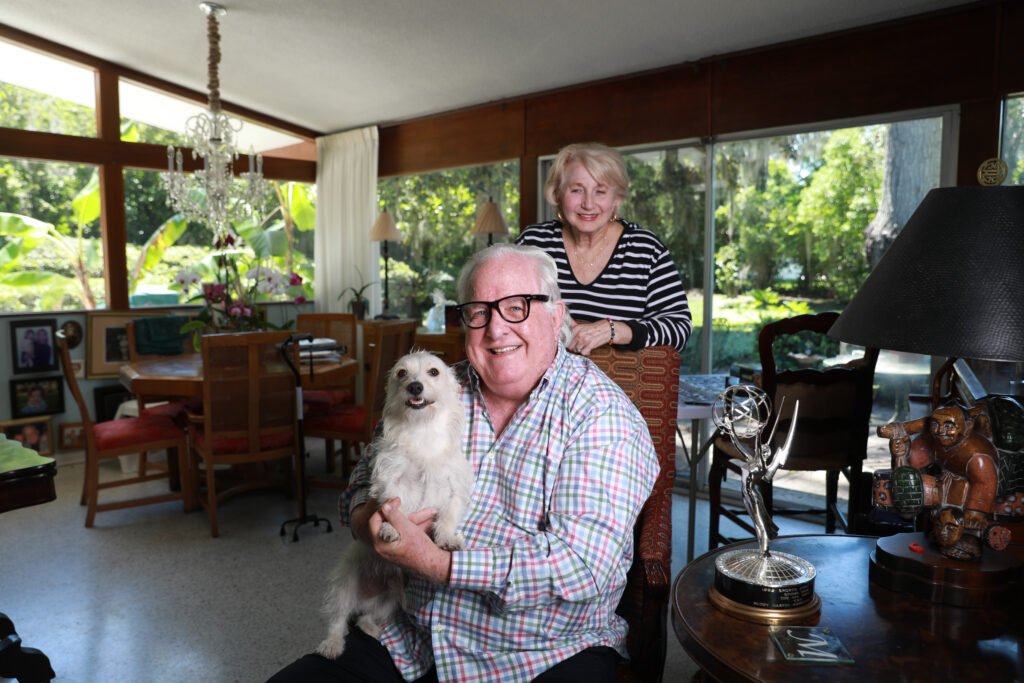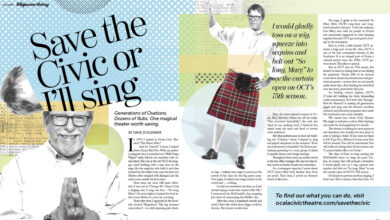Local media icon Buddy Martin is still going strong after an illustrious career in journalism

From his rental house in Lake Placid, Buddy Martin continued to bang out copy on his clunky Texas Instruments computer whilst play-by-play of the afternoon’s hockey game droned through the AM radio speakers in the background. Next to him sat Bill Madden, a fellow scribe working on his own literature for the next morning’s edition of the New York Daily News.
Suddenly, the noise coming through the radio speakers took on a grand new relevance. “Mad Dog, we gotta go to work here!” Martin exclaimed to Madden, who was feverishly completing a feature story on ABC broadcaster Jim McKay.
The date was Feb. 22, 1980, and the radio commentator had just announced Mike Eruzione’s goal that gave the Americans a 4-3 lead in the final period of its epic battle against the Soviet Union. The stage was set for one of the greatest upsets not just in Olympics history, but in the history of sports, and there was Buddy Martin once again in the right place at the right time.
Martin, the Ocala native who had risen to sports editor of one of the country’s great newspapers by this time, shifted gears – it was a mad dash to the arena to catch the game’s final iconic moments and reveal them in the prose that he alone could deliver under such tense deadline pressure. The episode perfectly encapsulated the career and essence of Buddy Martin: knowing where to be, knowing who to bring and recognizing news value in the heat of the moment.
It was a career that started like most, with humble origins hidden far from the limelight of large circulations and major league franchises, then took a circuitous route through some of sports’ most celebrated moments and events and would include many personal peaks and valleys. Along the way the awards would pile up, from excellence in writing and reporting to a Pulitzer nomination and even an Emmy, television’s highest accolade. The most recent honor came in April when Martin’s entire body of work earned him the Wilton F. Martin Lifetime Achievement Award from the Florida Public Relations Association.
Journalism is not just in Buddy Martin’s blood, it’s a chain of his DNA. His grandfather, William Laban Martin, started as a writer at the Ocala Evening Star (forerunner of today’s Ocala Star-Banner) and his father Wilton (yes, the namesake of the lifetime achievement award) worked for the Evening Star, was city editor of the St. Pete Independent and Tampa Times as well as managing editor of the Bradenton Herald. He was also the first public relations director for Silver Springs.
The Star-Banner published the sixth-grader Martin’s poem on the 1952 presidential election and his newspaper career was officially off to the races. At age 20, after a rough semester at the University of Florida, he accepted a temporary position as interim sports editor of the Star-Banner, care of Bernard Watts. The position became the first small step that would lead to similar roles down the road at Today (Cocoa), the St. Petersburg Times, New York Daily News and Denver Post among others.
“Most of the time, my changes or successes came on the heels of some failure,” said Martin, who admits that for as many times he received a hero’s welcome to a publication, there were some that ignominiously showed him the door out to the street.
In 1964, now as permanent sports editor of the Star-Banner, Martin won the Florida Sports Writers Association award for general excellence in writing, something that eventually became a bit of a double-edged sword. The award signaled the arrival of Martin, recognized by his peers as a talent in the industry, and at a party held in Gainesville to recognize Martin for the honor appeared the legendary columnist for the Miami Herald, Edwin Pope.
In an elevator at the hotel, Pope ran into Martin’s wife, Joni, and told her, “Your husband’s one hell of a newspaper man.”
For Buddy Martin, “That was one of the great thrills of my life. That was like winning the Pulitzer Prize.”
 The Pulitzer nearly did come Martin’s way as managing editor of the Charlotte Sun 40 years later when Hurricane Charley devastated Punta Gorda and other parts of southwest Florida. In getting the newspaper out to residents, Martin and his team had pulled the proverbial rabbit out of the hat, a feat that the Pulitzer committee deemed worthy of consideration and placed among its finalists for the award.
The Pulitzer nearly did come Martin’s way as managing editor of the Charlotte Sun 40 years later when Hurricane Charley devastated Punta Gorda and other parts of southwest Florida. In getting the newspaper out to residents, Martin and his team had pulled the proverbial rabbit out of the hat, a feat that the Pulitzer committee deemed worthy of consideration and placed among its finalists for the award.
The storm hit at 4:15 in the afternoon and later Martin found himself in downtown Punta Gorda, which looked like a war zone. The newspaper office had temporarily relocated to North Port, to where Martin eventually arrived.
“They had about half of a staff, no copy desk and no proofreaders,” Martin said. “I wrote a piece on what I saw in Punta Gorda and I had snapped a few photographs. The edition came out the next day and when the paper was handed out to people for free, they were crying; they couldn’t believe they actually had some information.
“Against all odds, this paper came out. That’s what you’re taught: the show must go on – you’ve got to publish.”
Back in 1964 after winning his writing award from the FSWA, things went south at the Star-Banner. Personalities and goals began to clash and Martin himself saw the writing on the wall.
“I had won awards and was getting job offers – that’s good for your ego, but it can create some animosity among your peers,” Martin said. “I was kind of full of myself, so I was partially to blame, but I did nothing wrong.”
Getting word that he may be on the way out, Martin beat his bosses to the punch and tenured his resignation in December of 1965, not long after covering the Florida-Miami football game. A day after quitting, his daughter suffered kidney problems and needed medical attention, but he was now uninsured.
“Here I was, in another one of those dark places you find in your life.”
Martin’s talent would not keep him on the sideline long. He would take over as sports editor of the new Today, a gig in Cocoa that lasted five years until he took over at the St. Pete Times, the first shot at the big time.
In St. Petersburg, Martin’s breakthrough may have come in the famous “Chicken Wire” story that blew the lid off a scandal in the Florida State University football program in 1973. Teamed up with fellow Ocalan Van McKenzie, who followed Martin to four different publications and earned a reputation, according to Madden, as “the best layout man in the country,” Martin smelled a rat in Tallahassee.
Seminole football players were quitting the program in droves, but zero reporting had taken place as to why. He directed Fred Girard, who later went on to big things as a reporter for the Detroit Free-Press, to go to Tallahassee and dig around, interview players and those close to the program.
It was discovered that head coach Larry Jones had been putting players through military-style regimens, some that involved players having to crawl under chicken wire as though in boot camp. Martin’s idea to record all the interviews in order to back up the story was key and eventually led to Jones’ firing.
“We got that story; we nailed it,” Martin proudly exclaims. “We sent it to an awards committee and got honorable mention. I think the guy collecting the stories was an FSU guy – how could this story have not gotten something? Nobody was doing that stuff in those days and that’s the greatest story I’ve ever been associated with.”
Martin has had a knack his whole career for associating himself not only with great stories, but great talent for which he has had an uncanny eye. Besides McKenzie and Girard, there is a long list of writers and editors who were hired by, worked with and even groomed directly by Martin that became stars in sports journalism. Ocala’s Jim Huber, who was an award-winning broadcaster for CNN and TBS, cut his teeth at the Star-Banner under the tutelage of Buddy Martin.
The names Rick Reilly and Gary Smith of Sports Illustrated fame; Mike Lupica, renowned columnist and author; Woody Paige, who worked with Martin at the Denver Post and is a regular commentator on ESPN; and Madden, the award-winning baseball writer and prolific author that became Martin’s fair-haired boy at the Daily News are just a few of the names that scratch the surface of a long list of “Who’s Who?” in sports journalism – writers and editors whose careers were all touched in some way by Buddy Martin.
“You hear about coaching trees – Buddy Martin has an incredible sports writers tree,” said Paige, who counts Martin as among the great influences on sports journalism. “He recognized great, young writers wherever he was. There must be 50 writers that worked for him that were top-class writers.”
“Buddy hired the best people – he just knew talent,” Madden said.
At the Daily News in 1978, Martin took over as sports editor of the publication’s afternoon edition and went to work doing what he did best: cleaning house and bringing in great talent. Madden’s memories of Martin’s tenure at the Daily News are still vivid and among his most cherished. He learned early on the Martin philosophy which has stuck with him his entire career.
“He hired all these really top-flight writers from all around,” said Madden, called upon by Martin to take over the Daily News’ vaunted New York Yankees beat. “He tried to assemble what he called the greatest sports staff in history and he had a lot of big names working there.”
Madden recalls the lunch he had with Martin upon his hiring.
“He said, ‘Billy, I want to emphasize how important this beat is going to be that I’m hiring you to do,’” Madden said. “‘A prototypical Daily News is cops, crime and mayhem on page one; naked pop tarts on the gossip pages in the middle of the paper; and George (Steinbrenner), Reggie (Jackson) and Billy (Martin) going at it on the back page.’ He said, ‘Steinbrenner thinks he owns the back page and between you and me, the fact of the matter is, he does.’”
Madden had come to the Daily News from United Press International and Martin felt he needed some indoctrination to the newspaper business. As such, Martin put his star beat writer on the copy desk three days a week and had him cover such plebian sports as hockey and professional basketball.
“Here it is my dream job to cover the New York Yankees for the Daily News and I’m starting out on the desk like a rookie!” Madden said. “Buddy wanted me to realize how everything worked there; he wanted to turn me into a utility infielder that winter, a guy he could call on to cover anything.”
‘Anything’ also meant going to Lake Placid in upstate New York to cover the Winter Olympics, a bit for which Madden felt himself ill-suited. Nonetheless, Martin saw within Madden the versatility to wring out some quality journalism and on the night of the USA hockey victory his instincts were proven correct.
Martin set off for the hockey arena and gave Madden instructions to find a related story. “You figure it out,” Madden recalls Buddy saying at the time.
Madden walked the streets of Lake Placid and stumbled onto an American Legion hall full of World War II and Korean War veterans that had been watching the game.
“These guys are crying, literally crying!” Madden remembers. “I got all these great interviews from these guys. One guy comes up to me and says, ‘Tonight is a night to go out on the streets and wave the flag; this is the greatest night in American history!’”
Madden’s story wound up on page three, rather significant for a sports report in the Daily News.
“I fought Buddy vigorously not to go (to Lake Placid). I think it was his instinct; he knew I would be able to do stuff up there beyond the pale that other people wouldn’t do.”
From the New York Daily News, Martin would head to Denver and take over as assistant managing editor and sports editor of the Denver Post in 1982, lifting that sports section into a national award winner. Again, he surrounded himself with major talent on the copy desk and in the field reporting and writing columns.
Martin’s new fair-haired boy became Paige, who was quickly earning a reputation for himself with his wit and insight. Paige remembers Martin’s ability to “think outside the box” in those days, and it showed during the 1983 NCAA Men’s Final Four in Albuquerque, N.M. Martin’s Denver Post team invaded Albuquerque with seven of its staff members and distributed the paper there the entire week, becoming the de facto paper-of-record beyond even the local Albuquerque Journal.
“Denver became the newspaper of the week,” according to Paige. “That was Buddy Martin coming in with that idea to shake it up and take it over.”
It helped that most places Martin went, he was given a near open checkbook to bring in talent and go after news stories. Said Madden: “Buddy was one sports editor who was given an unlimited expense account and always seemed to exceed it.”
Pushing the expenses at one point meant giving the young upstart Rick Reilly his first crack at a big-time sports event. In St. Louis to cover the World Series in 1982, Paige and Martin discussed the idea of pulling Reilly away from a story he was working on in Louisville to come write the lead for Game 7. As Paige recalls, hotel room service for snacks was going to cost nearly as much as the difference in flying Reilly to St. Louis instead of back to Denver.
“I turned to Buddy and said, ‘We can either bring Rick Reilly here and let him cover the game or we can get more chips and dip.’”
It turned out to be a learning experience for Reilly, who was rather proud of his game story noting the Cardinals’ victory over the Brewers; that is, until he conversed with Martin.
“Buddy said, ‘I hope whatever you wrote, it didn’t have in the opening lines something like it was in the deck for the cards or something like that,’” Paige recalled. “Rick then asked to stop at a payphone so he could call the desk: ‘Can we change my first paragraph?’”
At his core, Buddy Martin is a newspaper man, a journalist with a “nose for news.” But he is now and always has been a communicator, no matter the medium at hand. His involvement over the years with radio and television has been just as integral to his journalism as his reporting, editing and authoring of numerous sports books.
He is the godfather of sports talk radio in Central Florida, responsible for bringing the first all-sports talk radio to Ocala in 1996. In television, his work with Terry Bradshaw on “The NFL Today” show in the early 1990s earned him that coveted Emmy award. His versatility knows no bounds.
Today, Martin owns and manages Gator Bait magazine, hosts “The Buddy Martin Show” on social media and the “Best Friday in Football” podcast with Urban Meyer and Terry Bradshaw. His recent appearances on the SEC Network’s “Paul Finebaum Show” demonstrate that he clearly has not lost any velocity on his fastball.
“Buddy is totally immersed in being a communicator and he didn’t even know that is what he was going to do,” Paige said. “We started out as journalists and now we’re communicators because we’re using so many different forms. The form used to be newspapers then it became as much radio, television, the internet, YouTube, podcasts… so we’re no longer journalists or sports writers, we’re communicators.”
According to Madden, “Buddy was a visionary. The business was slowly evolving, even back then. It seemed like each year, there was a new way of sending our copy. Buddy said to me, ‘You know, Mad Dog, you better get used to this; pretty soon in the not-too-distant future people are going to be getting their news on televisions and not newspapers – newspapers are going to be obsolete.’
“I didn’t want to believe it and I didn’t think it was true, but he called it. Buddy was always one step ahead of the game.”
Through it all, the moments and the relationships have meant the most.
He once pitched to Ted Williams in a charity baseball game at Gerig Field; he was there for the Miracle on Ice, for Secretariat’s historic Triple Crown, for Jack Nicklaus’ Masters victory in 1986. He saw Hank Aaron beat Babe Ruth’s home run record and witnessed Jim Valvano’s N.C. State team upset Houston in the greatest Final Four. He was there for the launching of the first moon rocket, had drinks and performed a piano duet one evening with Ron Ziegler, the press secretary for President Richard Nixon. He attended Louis Armstrong’s funeral, walked down New York’s Fifth Avenue with NBA legend Julius ‘Dr. J’ Erving and conducted numerous personal interview sessions with the likes of Nicklaus and even minister/author Norman Vincent Peale.
His trek through some of sports history’s significant moments has been of Forrest Gumpian proportion. The difference being that the fictional cinematic character was dim-witted and fell by accident into his moments of grandeur, while Buddy Martin is quick with the gifted phrase and possesses the proper instincts that put him in the right place at the right time. His moments have clearly been by design.
Today, with his wife Joni by his side, Martin enjoys life back in the place of his roots, but not as a retiree spinning yarns of his days in the big time between rounds of golf or frames of bocce ball – he continues to communicate as the journalist he was born to be and destined to die as. The mediums have changed and Martin has adapted, now throwing his pearls of wit and wisdom via podcasts, Facebook and even the venerable Gator Bait magazine.
“You know what an incredible journey I’ve had in journalism?” Martin recently pondered. “The awards don’t really matter that much, but the experiences mean everything.”
And for Buddy Martin, now 82, experiences still lie on the horizon. He will find them and he will communicate them to the world with the clarity and honesty for which he is famous, and at the same standard he’s pushed himself to achieve ever since that first day he sat down and tapped the typewriter keys at the old Ocala Star-Banner.






